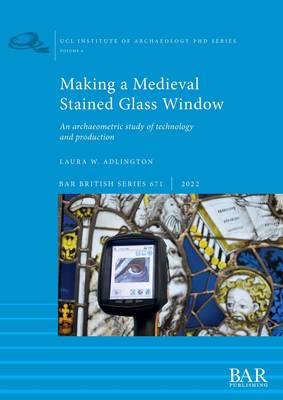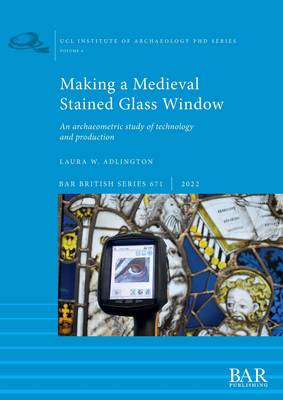
- Retrait gratuit dans votre magasin Club
- 7.000.000 titres dans notre catalogue
- Payer en toute sécurité
- Toujours un magasin près de chez vous
- Retrait gratuit dans votre magasin Club
- 7.000.0000 titres dans notre catalogue
- Payer en toute sécurité
- Toujours un magasin près de chez vous
Making a Medieval Stained Glass Window
An archaeometric study of technology and production
Laura W AdlingtonDescription
Medieval stained glass windows are relatively untapped sources of information about medieval technology and production because their architectural context usually prohibits sampling for chemical analysis. This volume presents a comprehensive study of York Minster's Great East Window (1405-1408), investigating glass-making technology and provenance, and glass-painting craft organisation. Chemical analysis relies upon established methods of elemental and isotope-ratio analysis and development of an in-situ technique, handheld/portable x-ray fluorescence (pXRF). The book also brings together historical documentation, art historical information, and meta-analysis of legacy data. Concepts borrowed from archaeological and pedagogical studies, including chaîne opèratoire, technological choice, apprenticeship and batch theory, and production models from the automobile industry, provide a new lens through which to interpret the data. Findings regard long-term relationships between York Minster and glass suppliers, the level of sophistication exhibited by medieval glassmakers, and detailed insights into the window workshop, including identification of work by different craftsmen.
Spécifications
Parties prenantes
- Auteur(s) :
- Editeur:
Contenu
- Nombre de pages :
- 262
- Langue:
- Anglais
- Collection :
- Tome:
- n° 671
Caractéristiques
- EAN:
- 9781407358505
- Date de parution :
- 31-05-22
- Format:
- Livre broché
- Format numérique:
- Trade paperback (VS)
- Dimensions :
- 210 mm x 297 mm
- Poids :
- 852 g

Les avis
Nous publions uniquement les avis qui respectent les conditions requises. Consultez nos conditions pour les avis.






